Fun Table Top Activities for Kids with Autism: Sensory Ideas
Discover how to keep your child engaged while learning skills

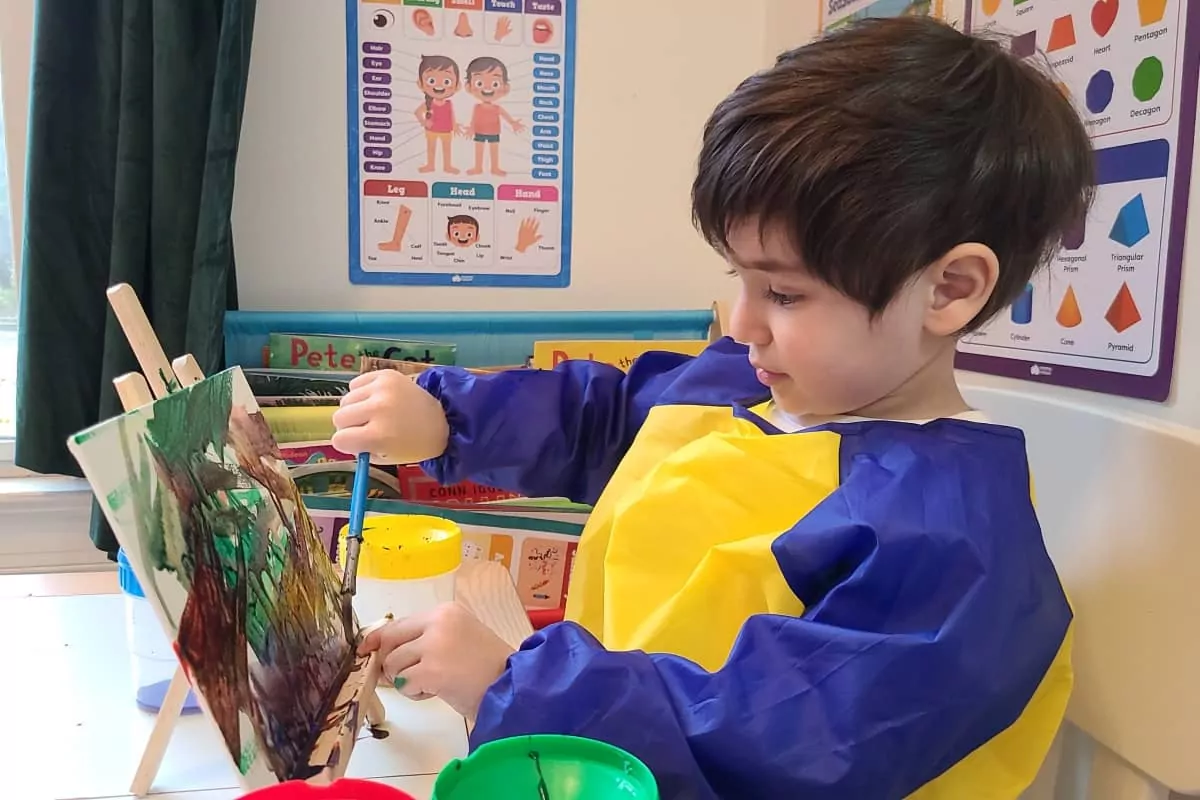
Whether on the spectrum or not, playtime is typically a significant part of a child’s daily routine. However, when it comes to children with autism, playtime is much more than just a source of entertainment.
Children learn through play, and for children on the spectrum, engaging in activities is often the most valuable way for them to develop skills that might not come as naturally to them.
As long as an activity is safe, there are no right or wrong ways for a child to play. But, certain activities maximize the development of social, emotional, cognitive, and physical skills.
Keep reading to learn my recommendations for tabletop activities for kids with autism
10 Table Top Activities for Kids with Autism
1) Play-Doh
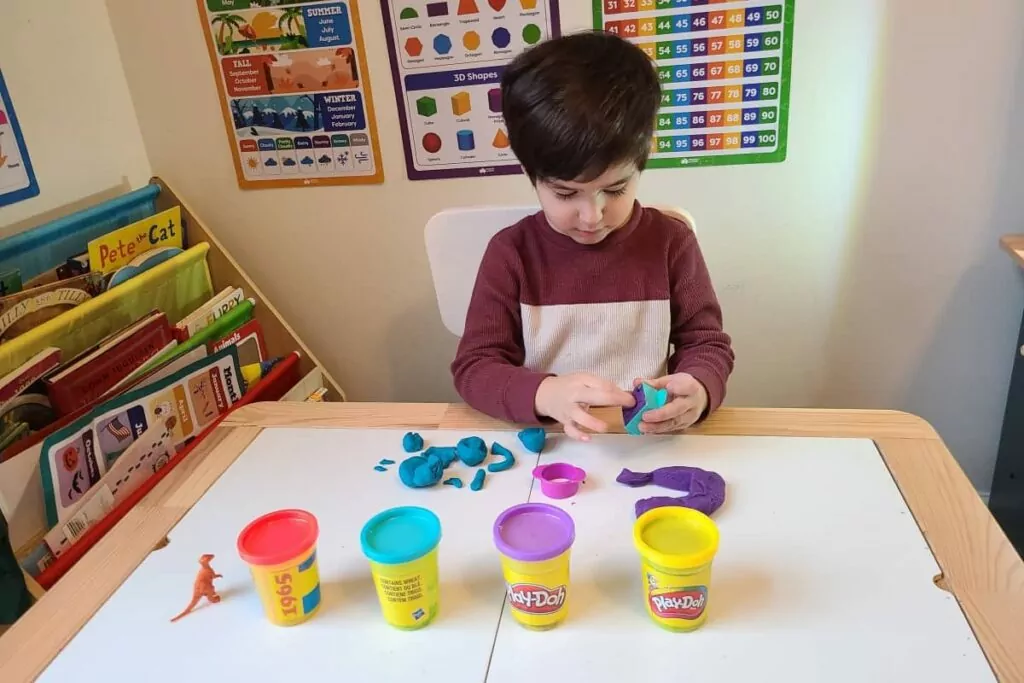
Playing with Play-Doh or clay is a sensory engaging activity many children on the spectrum can get carried away with for hours.
- Kneading, rolling, shaping, and poking the colorful dough can relieve stress, refine motor functions, and facilitate learning.
- Including Play-Doh tools, plastic cookie cutters, and fake food adds imagination and creativity to the experience while exercising their motor skills and three-dimensional thinking.
2) Painting
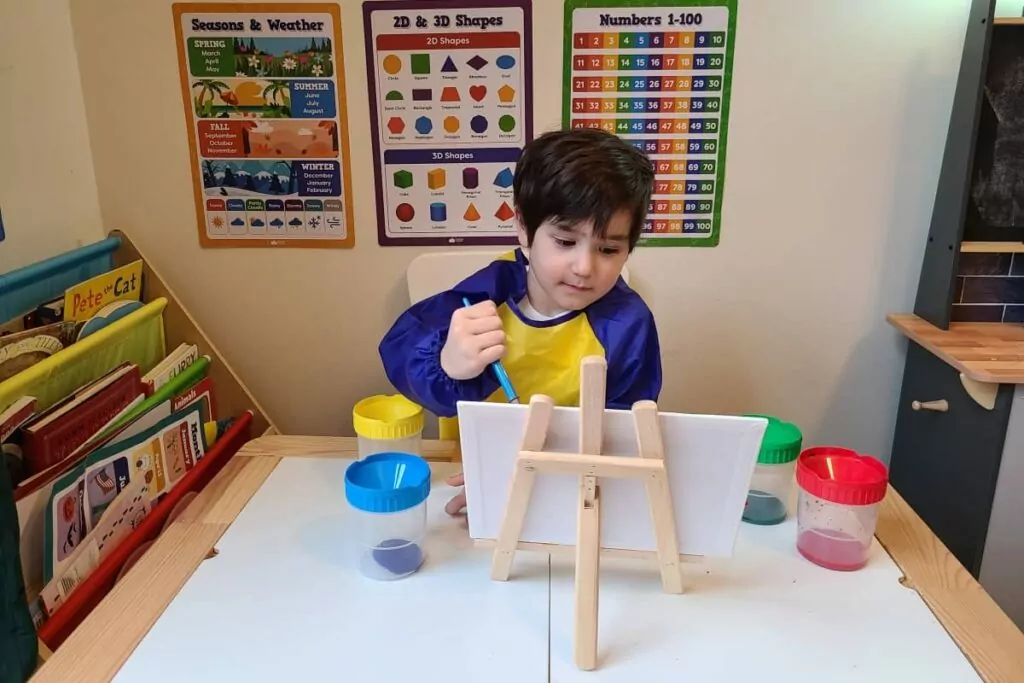
Painting is often popular among autistic children because it provides a non-verbal way to express their emotions and ideas and communicate.
- Painting or creating with other art mediums like crayons or markers is often used for therapeutic reasons and to work on sensory skills.
- For many children, using a paintbrush may quickly turn into a finger painting activity which is great because it helps a child with visual and spatial discrepancies.
3) Lego table
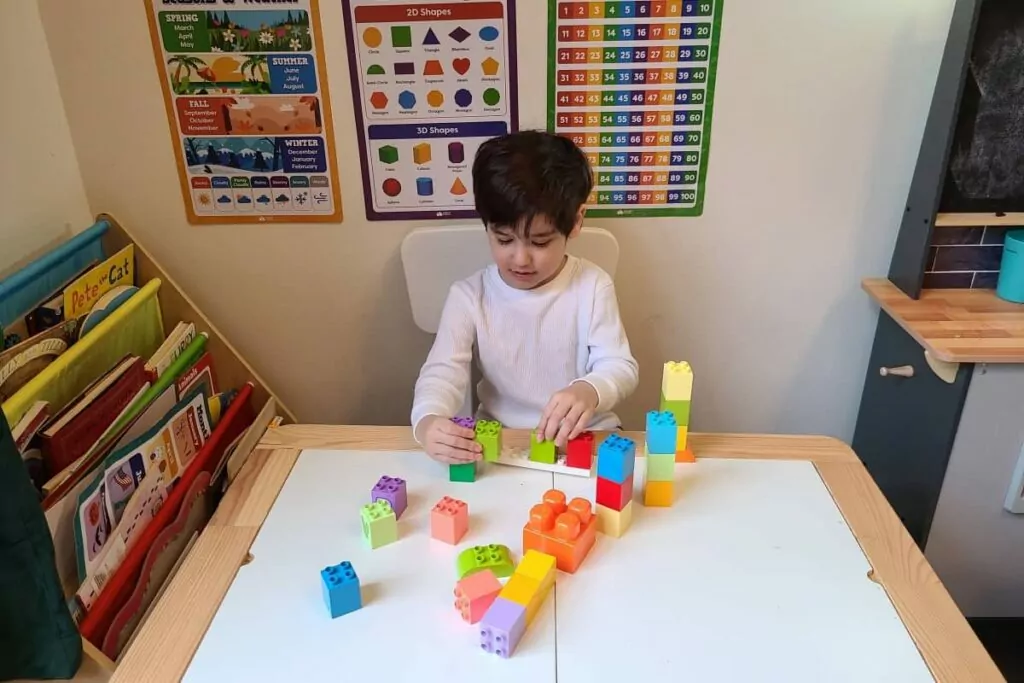
Many children with autism follow particular habits, patterns, and routines during play.
- For example, a child may find it fun to organize toys according to size, put them away, and do it again.
- Or they may build a structure, take it apart, and put it back together in the exact same way.
Legos are great for children who follow play patterns because they are comfortable, easy, and repeatable.
Many children love lego tables because they appreciate that they can move on to another activity without fear that their creations will be knocked over. Plus, cleaning up is easy since the legos will go straight into the table after use.
4) Car track table
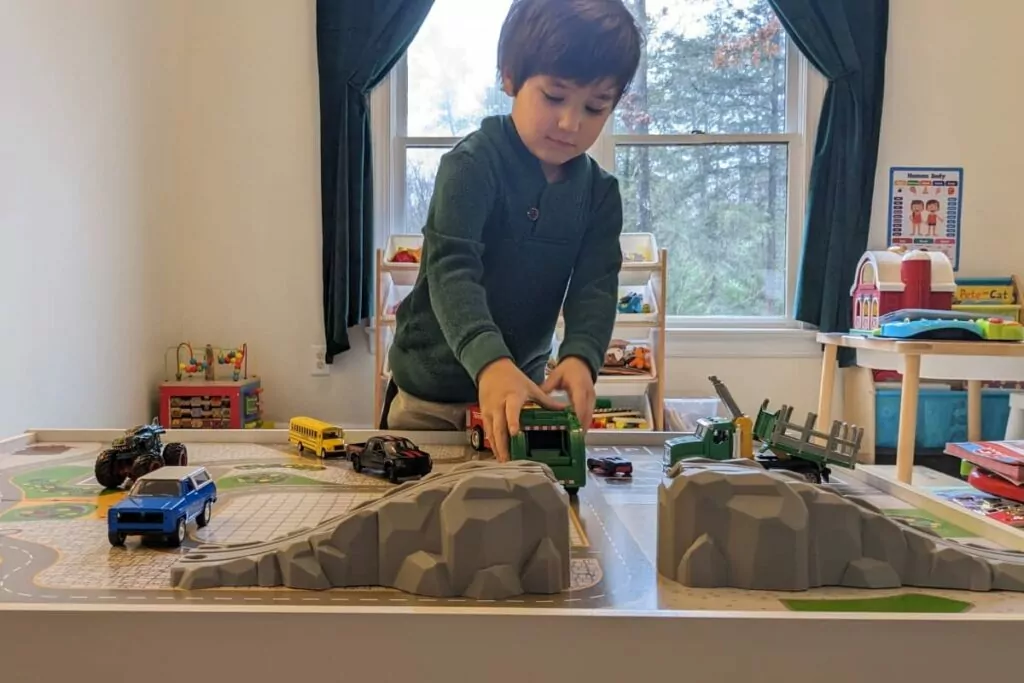
Playing with cars, trucks, or other toy vehicles targets many skills while learning.
- When a kid pushes a car down a ramp, they question the cause-and-effect relationship, and fine motor skills are strengthened through moving a car along a curvy road.
- You can also teach your child about emergency and construction vehicles with car play.
Consider purchasing a buildable track set or car track table. I recommend this multilevel table from amazon.
5) Sensory sand table
Many parents, caregivers, and therapists try to incorporate activities into playtime that are both enjoyable and sensory engaging. Sensory sand tables do just that.
- Many autistic children find relaxation by sifting, squeezing, scooping, and building with sand.
- These actions strengthen tactile, auditory, visual, olfactory, vestibular, and proprioceptive sensory skills, many of which are hard to incorporate into play at once.
Here, you can learn more about the benefits of sensory sand play and see which sand tables we recommend.
6) Sensory water table
Like sand tables, many children find hours of enjoyment in water play.
- Children with autism are often drawn to liquids because they are intrigued by the way it moves and feels on the skin.
- Water can be splashed, poured, and pushed in ways that spark curiosity. Having toys in the water adds extra opportunities for learning through experimentation.
You can purchase a sensory water table or make your own at home. Here you can find a list of sensory water tables recommended by a parent with a child on the spectrum.
7) Toolset workbench
Soon after a child on the spectrum begins crawling, walking, and playing with their hands, parents may discover that their child has a very methodical mind.
- Activities that include tasks, building, and fixing are perfect for children curious about the structure and systematics behind everyday items.
- Kid-friendly tool sets and workbenches let your child explore these curiosities while working on their motor, cognitive, and creative skills.
I recommend this Step2 workbench with plastic tools, screws, and buildable wooden toys.
8) Playing with tongs
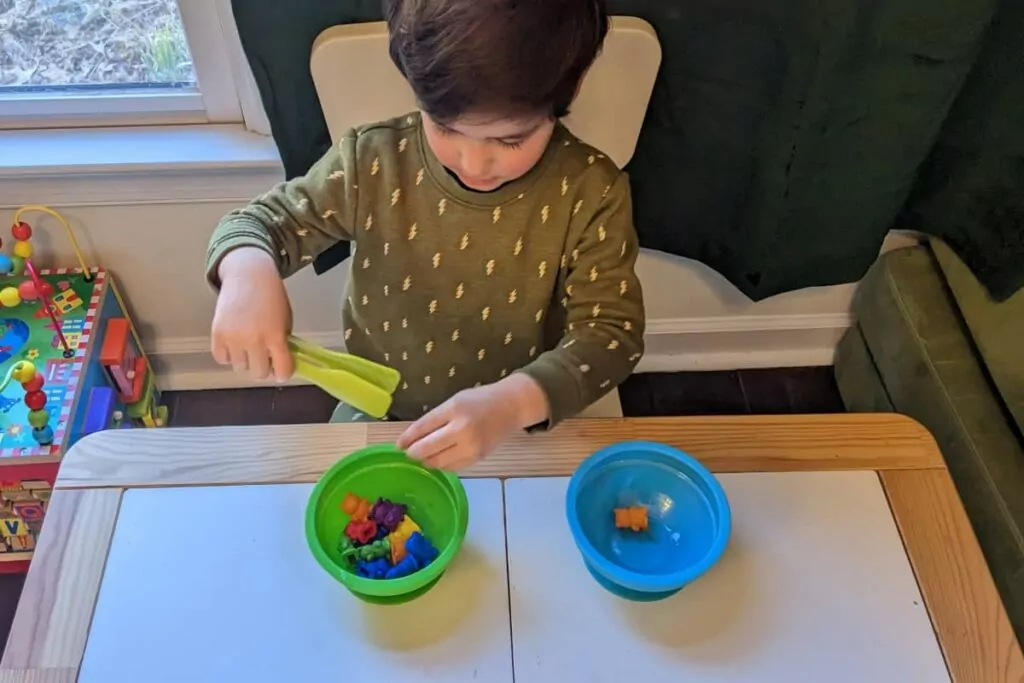
Through my experience working and playing with children on the spectrum, I found that most kids are captivated by kitchen tongs.
Here are two tong activities that were fan favorites among little ones.
- Give your child two or more bowls of ice and a pair of tongs. Most children can spend hours moving the slippery ice cubes back and forth between the bowls.
- Give your child a pair of tongs, multiple empty bowls, and one bowl filled with colorful pom poms. Many children on the spectrum love sorting items according to size and color.
Picking up and placing items with tongs teaches a child how to regulate their hand movements and strength. (skills that many children on the spectrum struggle with).
When giving a child items to sort with tongs, they also exercise their visual sensory skills.
9) Wooden shapes brain teaser puzzle
Many children with autism enjoy puzzles because they involve structure and a predictable outcome. However, many children find puzzles frustrating because the pieces can’t be put together in any way other than intended.
- This wooden shapes brain teaser puzzle is perfect for children who prefer a predictable outcome and children who get frustrated when there is no alternative solution.
- The wooden shapes puzzle includes a set of Tetris-like blocks that can be put together and taken apart repeatedly in various ways.
Puzzles are great for children on the spectrum because they promote problem-solving, improve memory, and build attention span.
10) Magna-tiles
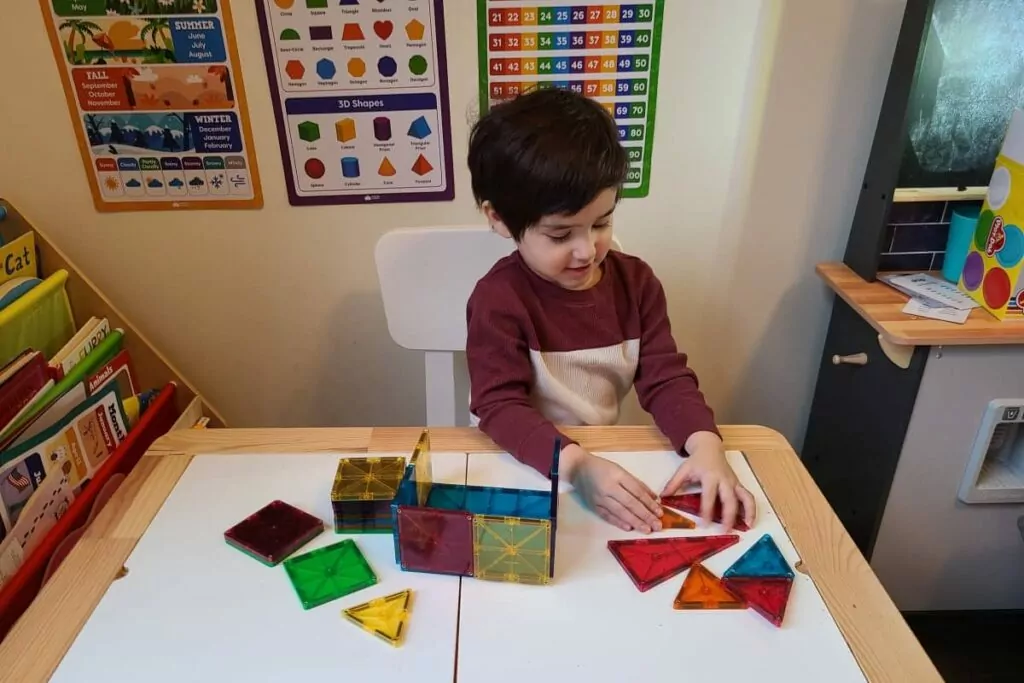
Magna-tiles are flat blocks that are held together by magnets. If your child struggles with putting together and taking typical blocks apart, magnetic tiles are the best alternative that still offers the benefit of motor skill development.
- Magnetic tiles are triangular and square, which helps a child recognize how different shapes fit together.
- The tiles also come in various colors, which is great for color recognition.
An added benefit of these blocks is their transparency. Your child can see through the tiles, making it easier to identify and understand 3D structures.
You can find Magna-tiles at Target and magnetic blocks made by other brands on Amazon.
Want more ideas for creating a fun and safe space for your autistic kid? Check out our guide on creating an autism sensory room.
Frequently Asked Questions
What activities are best for sensory stimulation?
The activities best for sensory stimulation are ones that incorporate colors, shapes, movement, smells, sounds, and strategy. All the activities listed above are great for the development of most senses.
How do I know which activities are best for my child?
You can tell which activities are best for your child by monitoring their engagement. If you leave the room and your child moves on to another activity, they may see the activity as a task instead of a source of genuine entertainment. You can also perform a motivation assessment to help determine what type of activities interest your child.
Written by Stephanie Chapple

Stephanie is a mother, writer, and artist with an affinity for rock and mineral collecting. Through the personal challenges of living with ADHD, the inspirational pleasures of working with cognitively disabled children, and having loved ones on the spectrum, she developed a thirst for knowledge regarding neurological development and behavioral health.
